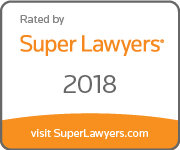By Lou Caputo
Legal debate centers on whether certain multi-level marketing (“MLM”) business structures are legitimate or fraudulent. The Sixth Circuit has explained that no definitive boundary “separates illegal pyramid schemes from legitimate multilevel marketing programs; to differentiate the two, regulators evaluate the marketing strategy (e.g., emphasis on recruitment versus sales) and the percent of product sold compared to the percent of commissions granted. United States v. Gold Unlimited, Inc., 177 F.3d 472, 475 (6th Cir. 1999). The final answer to such a question, though, is of paramount concern to the business’ owners and principals from a liability standpoint. The inevitable problems that follow a government determination that a company is perpetrating a fraud include, at a minimum, a heightened risk of having the business investigated to shutting it down through summarily seizing property, including all bank holdings of the company. Occasionally restitution orders are levied. Of greatest concern, serious criminal charges may be brought against the principals and leading distributors. Many states have crafted their own statutes to prosecute pyramid and other similar schemes, and websites of Attorneys General have consumer protection warnings against pyramid schemes. For example, see the State of Washington’s at http://www.atg.wa.gov/ConsumerIssues/PyramidSchemes.aspx#.UNKGcaVj7ww; or Michigan’s, http://www.michigan.gov/ag/0,4534,7-164-17337_20942-208400–,00.html.
It breaks down like this.
A legitimate MLM platform is “distinguishable from an illegal pyramid scheme in the sense that the ‘primary purpose’ of the enterprise and its associated individuals is to sell or market an end-product with end-consumers, and not to reward associated individuals for the recruitment of more marketers or ‘associates.’” Fed. Trade Comm’n v. Skybiz.com, Inc., 01-CV-396-K(E), 2001 WL 1673645 (N.D. Okla. Aug. 31, 2001) aff’d sub nom. F.T.C. v. Skybiz.com, Inc., 57 F. App’x 374 (10th Cir. 2003). The FTC Bureau of Consumer Protection explains that MLM distributors often collect not only a percentage from sales of product but also financial rewards for the enlistment of new distributor recruits and based on sales of products by the new distributors that they recruit. The largest of these type of platforms are well known: Amway and Mary Kay. There are, however, thousands of MLM companies operating around the world.
Pyramid schemes, by contrast, are “characterized by the payment by participants of money to the company in return for which they receive (1) the right to sell a product and (2) the right to receive in return for recruiting other participants into the program rewards which are unrelated to sale of the product to ultimate users. In general such recruitment is facilitated by promising all participants the same ‘lucrative’ rights to recruit.” In the Matter of Koscot Interplanetary, Inc., et al., 86 F.T.C. 1106 (1975). For a good example, see Fed. Trade Comm’n v. Skybiz.com, Inc., 01-CV-396-K(E), 2001 WL 1673645 (N.D. Okla. Aug. 31, 2001) aff’d sub nom. F.T.C. v. Skybiz.com, Inc., 57 F. App’x 374 (10th Cir. 2003). For a good outline and thorough discussion of the connection between purported MLM’s and other fraudulent enterprises, see Jon M. Taylor, Ph. D., “The Five Red Flags, Five Causal and Defining Characteristics of Product-Based Pyramid Schemes, or Recruiting MLM’s” (http://www.ftc.gov/os/comments/businessopprule/522418-12585.pdf).
Ponzi schemes, as discussed in my last post, are different from both MLM’s and pyramid schemes. In a Ponzi scheme, there are no “distributors,” rather almost all are “investors.” Individuals are promised some form of exceptional reward or dividend based on his or her initial financial contribution. That reward or dividend is, in fact, not generated by a company’s revenue or profits, but from the financial contributions of new investors.
Given the above illustrations it would seem fairly easy, if one was so inclined, to maintain a strictly legitimate business model. Courts recognize that genuine MLM’s “pose less risk of harm to investors and the public.” Gold Unlimited, Inc., 177 F.3d at 479-80. In numerous cases, however, what began as an MLM at some point morphs into a pyramid or Ponzi scheme. To make that distinction, the pertinent question is often “whether the revenues from sales of the goods and services to consumers is sufficient to cover the production costs or costs of the goods sold, the various marketing expenses, and the promised rewards for recruiting new participants. If the revenue from such sales is sufficient, there is no structural certainty of collapse.” F.T.C. v. Five-Star Auto Club, Inc., 97 F. Supp. 2d 502, 531 (S.D.N.Y. 2000). When there is no structural certainty of collapse, the public harm which underlies the justification for applying draconian intervention by the state does not exist. Notwithstanding, any “anti-saturation” protections (i.e. policies to ensure that those distributors on the lower tiers will not fail to recruit new distributors and, in turn, generate more revenue), the defendant carries the burden of proving the viability of the concern; the government does not carry the opposite burden (of proving the lack of viability). Gold Unlimited, Inc., 177 F.3d at 482. Rather, the government must present prima facie evidence of an unlawful scheme and, once that is done, the burden shifts to the defendant. Proof requires economic data, even economic expert testimony, and it is ordinarily not sufficient to rely exclusively on company policies, even if those policies are shown to be enforced. See generally, Webster v. Omnitrition Int’l, Inc., 79 F.3d 776, 781-84 (9th Cir. 1996).
To be sure, any business or company being investigated as a pyramid or illegitimate MLM scheme faces an uncertain road. The FTC and most states have made it clear that they respectively intend to prosecute offenders vigorously, to the fullest extent of the law. In the next segment, I’ll review what steps government agencies can take against the property of businesses that they are investigating and prosecuting, and the possible (and often probable) impact that follows from the draconian powers possessed by the government.







